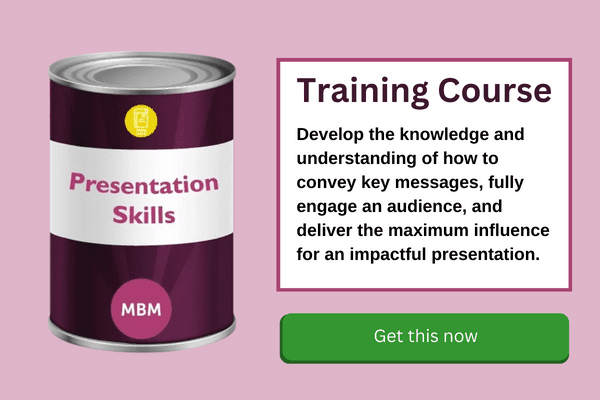Why Do These Presentation Skills Tips Matter?
Many presentations are boring, dull, dry and Lifeless. That’s what Akash Karia states in How to Design Ted Worthy Presentations (a book you should read). Boring, dull, dry and lifeless? That’s a real whip to give a presentation. But guess what; Akash Karia is describing reality. I bet you’ve dozed off (or had your mind wander off) in quite a fewpresentation skills tips mind-numbing presentations yourself.
You would think that makes you a better speaker when it is our turn to take the stage. Sadly, no. It doesn’t. You need to consciously watch out for presentation skills tips if you are to captivate and awe your audience.
What is at stake if you don’t?
Communication. With a Boring, dull, dry and lifeless presentation, no communication happens.
A presentation is supposed to stick a message in the minds of your audience. A message that should persuade it to take a step (say, sign that million dollar contract). And when that doesn’t happen, as Akash would say, “the presentation becomes a downright disgrace.”
There is good news, though. Your team can do better. In fact, it can do very well if they adopt the following 15 presentation tips:
#1 – Not Starting with PowerPoint
Presentation software (Prezi, Keynote or PowerPoint) is the real hack. It should be on the top of the presentation skills tips list. Right? Not really. It is unfortunate that many of us first run to presentation software when called upon to make a presentation. But guess what; that’s not where the preparation should start. In fact, beginning with slides gets in the way of an impressive presentation.
Remember; slides are aids to a presentation, not the main thing. However, this doesn’t mean that you take them casually. It only means you should prepare them after you’ve taken care of more important things.

#2 – Being Crystal Clear on the Core Message
A sure recipe for a convoluted and hard to follow presentation is sharing many ideas together. If there is one lesson you should run with from this list of presentation skills tips, this is the one.
Do you know what happens when your audience can’t point out the one idea you are rooting for? It becomes confusing. And with that comes a lack of interest, boredom and even disgust.
The first step in preparing your presentation is to decide what your core message should be, then dress it up for your audience. Akash puts it well like this; “If your message sucks, your presentation will suck….If your core message isn’t crystal clear to you, it won’t be clear to your audience.”
To reach this end, ask yourself; what is the idea I want to be stuck in the mind of my audience when I am done with them? What is the single sentence I want them to recall weeks later when they’ve forgotten everything else? It is after you are clear on the core message that you proceed. Any other idea that comes up should be left to stand if only it helps the audience understand your core message.

#3 – Putting Ideas on Paper First
Instead of opening PowerPoint, grab your notebook and some note cards. Let the brainstorming begin.
At this stage, you are putting down supporting ideas inhibited. Record each idea on a notecard or sticky note and take the time to conceptualize them. Throw away those that do not support the core message.
Then create a presentation storyboard. If needs be, stick your notes up on the wall and figure out how they should flow. Each of the sticky notes would represent one sub-idea, which you will later transfer onto a slide.
Sticky Learning ® is 7 times more effective than 1-day training courses. Plus, you will get a Chain of Evidence proving your Return on Investment. Discover soft skills training that changes behaviours long term.

#4 – Researching the Core Message
Only one inaccurate point is enough to kill the interest of the audience (remember; your audience are intelligent people). Thorough research is, therefore, inevitable for a serious presenter. Never assume that you understand a subject so well that you don’t need to do any digging. Research, even the most obvious points, as long as there is the slightest doubt.
A little research also makes your presentation detailed and fleshier. Even so, avoid the curse of knowledge.
The curse of knowledge works like this; being so well informed in your area of expertise you forget how it feels not to know the things you know. Thus, you assume that your audience understands “basics”.
#5 – Knowing the Audience
It is important you know your audience. If, for example, you are to address a procurement committee, ensure you know the members. The internet is handy in this situation. You may also talk to people who have worked with them before. Tailor your presentation to the member who you figure will have the most difficulty in understanding your concepts.
Importantly; ensure that the presentation is ‘you-focused.’ That means you use more of ‘you,’ ‘your’, ‘you’re’ than ‘we’ or ‘I.’
#6 – Every Idea on its Own Slide

This can’t be said enough times. While trying to minimise the number of slides, you might be tempted to populate each with as many ideas as you think it can accommodate. This is counterproductive.
Several points on one slide kill curiosity because, by the time you move on to the next point, the audience has already read it. What’s more, they won’t pay attention to what you are saying. Each idea should stand on its own slide. This eliminates clutter, keeps the audience’s attention and leaves room for visuals. Here is an excellent example.
#7 – Use More Visuals than Text
One research that Dr. John Medina documents in his book Brain Rules show that most people only remember 10% of text content in a presentation after three days. But that figure shoots up to 65% when images are used. Thus visuals or images should cover much of your slides. A lot of text makes the audience strain their eyes, and that is a turn-off.
Always ask yourself whether what you want to say can best be described using an image. However, ensure that your images observe the Three Second Rule (Meaning the audience should get the idea behind it in three seconds), the Rule of Thirds and that they aren’t clichéd.
#8 – Practice the Presentation
Even with a clear core message, relevant supporting ideas and excellent image-filled slides, you aren’t done yet. Not until you’ve practiced enough.
Practicing will help you catch what might not work early enough and also helps you internalize the presentation. You can rehearse in front of a mirror, with colleagues or even with friends and family members. Feedback is much needed at this stage.
#9 – Arriving Early at the Venue
This is the first of the presentation tips for the Day. It is important that you have some time to prepare at the venue before the presentation starts. Use the extra time to set up the equipment and make sure they work properly.
That’s not all you need to do, though. Familiarise yourself with the venue and interact with the audience to create a connection. Developing a rapport is especially critical because it eases the tension that might have accumulated while you prepared for the presentation.
#10 – Breathe in Deeply Before You Begin

The fear of standing in front of people has been cited to be as strong as the fear of death. However, taking a deep breath has a way of calming your nerves. What’s more, it increases the supply of oxygen to your organs, which includes your brain thus making you think clearly.
Also throughout the presentation, try to speak from your lungs. It not only increases your audibility but also keeps up the oxygen supply.
#11 – Keeping Eye Contact with the Audience
When you look people in the eye, you create a connection that makes them more receptive. They feel you are talking to them. It also helps you to personalize your message.
Make sure, though that you rotate your eye contact ritual. Staring at one person for a long time might scare them. It might also make the others lose interest because they figure that it is the show for the two of you.
#12 – Not Reading from Your Slides
“If you and your slides are saying the same thing, one of you is not needed,” once stated, Craig Valentine, who is a professional speaker.
The slides should benefit the audience and not you. Indeed, if you think you can pass the message effectively without slides, then don’t have them (watch Sir Ken Robinson make an excellent presentation without slides)
And if you are going to rely on the slides, then you aren’t prepared. Indeed, your voice is the most important part of the presentation. Your slides should only serve as aids to drive home your core message.
This isn’t a complete list of presentation skills tips. However, starting here will put you on the right track. You can also watch our Presentation Skills Youtube playlist for more tips.


